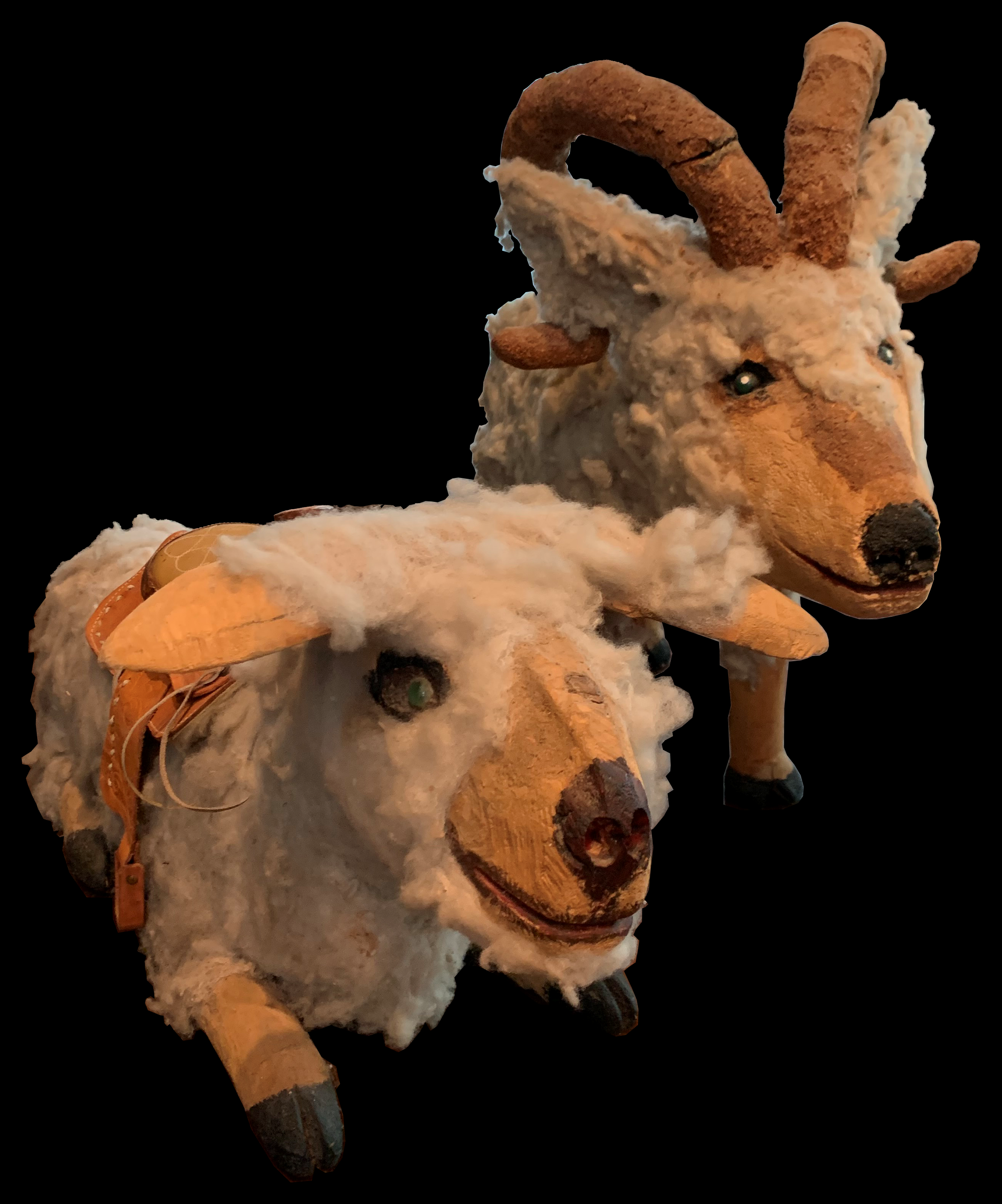Felipe Archuleta
1910 - 1991
Born in 1910, in the Sangre de Cristo Mountains of New Mexico, his Spanish heritage exposed him to "bulto" making, the shaping of wooden religious figures used in shrines. While employed as a carpenter in 1967, with work scarce, he prayed for a new vocation. According to Archuleta, it was during a period of conflict with the carpenters’ union that the Lord appeared to him and said “carve wood”. He responded “I am not worthy to be a santero (maker of saints). So I will carve animals.” He began to carve in response to his vision and thus a new era in Hispanic art and tradition was born. In the 1970s, the Museum of International Folk Art in Santa Fe put an Archuleta menagerie on display and soon he was besieged by collectors of southwestern folk art. “Caramba!” the artist shouted, “I got too many orders.” Archuleta carved animals – representations of domestic and wild animals that he had observed and animals that are pictured in books. He was known for making his animals seem rough and fierce. They often had long, sharp claws and snarling mouths filled with big white teeth. Archuleta worked in wood – elm or cottonwood – which he shaped and joined, often employing wood filler to provide more body. Details such as ears, teeth, and hair were sometimes made from metal or plastic. The completed figure was then covered with gesso and painted. ²
Felipe Archuleta - 1977 by Davis Mather

















